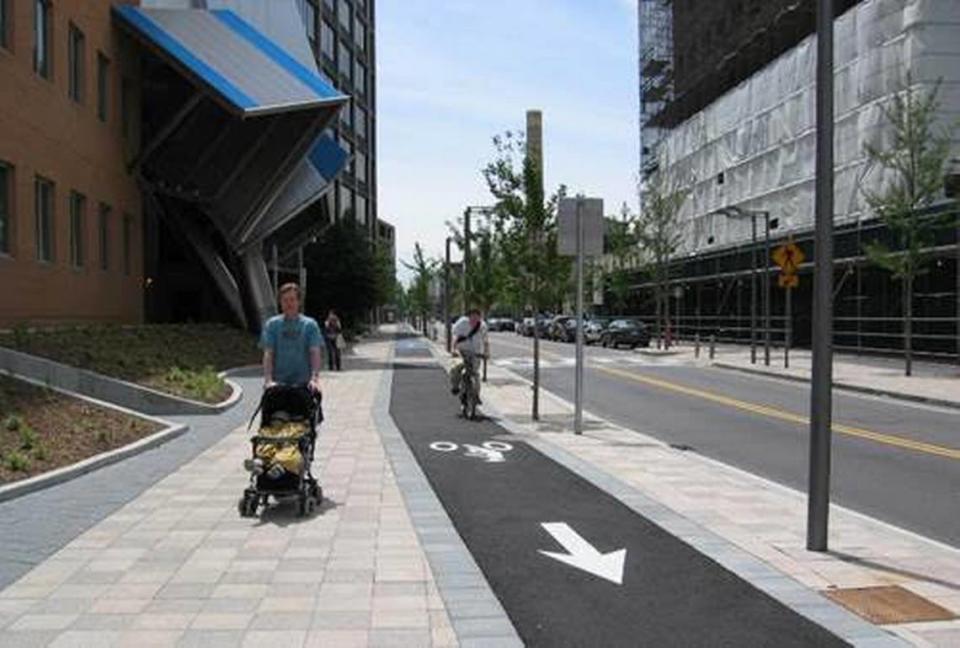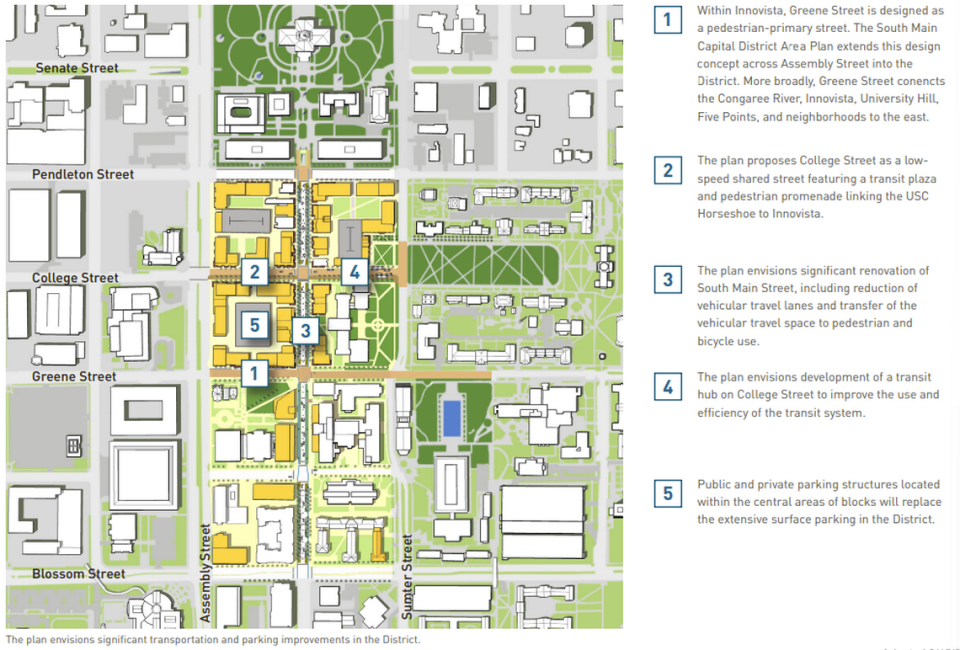After years of visioning, South Main Street is still ugly. USC says it won’t be for long
The concrete-filled, parking lot-laden stretch of Main Street south of the state capitol complex may finally be getting its long-awaited makeover.
Plans to go from five lanes to two, install green space, widen sidewalks and add bike lanes between Pendleton and Blossom streets have been in the works since at least 2017.

The project has suffered a number of false starts over the years due to rising construction costs that have continuously pushed the work over budget.
University of South Carolina architect Derek Gruner said he believes those concerns are in the past.
The more than $23 million project is a multi-governmental collaboration, using federal, state, county and city dollars, as well as money from USC’s coffers. Contractors will bid on the project in September, and work may begin before the year is out, if not in early 2023.
The state Department of Transportation is leading the project and plans to be finished with the work by fall 2024, according to a department spokesperson.
Renovating South Main is part of USC’s grand vision for westward expansion. The university began looking for ways to grow west in the early 1990s, after tensions arose with historic neighborhoods the institution was encroaching on.
Renovating and reconnecting Greene Street was at the center of the plans for westward growth, then later South Main Street was identified as another obvious student conduit. With infrastructure work on Greene Street nearly complete, USC is now taking another step closer to connecting campus with downtown.

USC requested the initial S.C. Department of Transportation study on the corridor renovation about five years ago and has been heavily involved in the design process. The university’s frequent collaborator, design firm Sasaki, authored a 2017 plan that included recommendations for pedestrian promenades and wide stretches of green space.
“That segment of Main Street has not seen the quality of development that you see on other urban streets,” Gruner said. With the westward move, South Main “finds itself very near the heart of our campus.”
So the university began looking at ways to improve the blighted, heavily concrete corridor.
The university owns a significant amount of property in the eight-block project area. The USC Development Foundation also owns a handful of parcels, including the property where the Main Street Domino’s pizza restaurant is located.
https://www.thestate.com/news/local/article155958419.html
Gruner said despite the ownership, he isn’t aware of any active projects being pursued by the university or the foundation.
“Our interest was that it should be dense,” he said. But specifics should be left to private developers, he said.
In fact, in 2015, a private developer planned to build a 15-story student apartment tower on South Main Street, but the university and its alumni association opposed it and played a key role in shutting down the development plan. Later, the university Development Foundation bought that same property, which it leased to the Domino’s restaurant.
Gruner said that was not an example of the university resisting new development, but rather resisting development that was too tall and that didn’t fit with other buildings in the area.
“It was a commitment to preserve the character of the South Main Street district that led to the South Main Capital District Area Plan that recommended buildings be no taller than six stories in the South Main district,” he said.
Eventually, Gruner said, the hope is no more street-facing parking lots, but instead five- to six-story buildings housing things like retail, restaurants and office space packed as densely as possible.
While it has taken years to get this far, Gruner said the work finally realizes recommendations highlighted in an early 1900s land study of Columbia, which called for more greenery and pedestrian promenades to replace Columbia’s “unsightly” and over-wide streets.
“I believe good ideas always find their place in time, it just sometimes takes extraordinary patience,” Gruner said.

 Yahoo Movies
Yahoo Movies 
